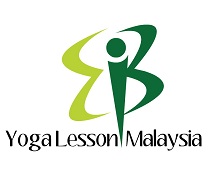Are you ready and inspired to try your first yoga class and have no idea what to expect? Here’s an enumeration of what you can practically expect at your first yoga class, and what to wear, when to arrive, basic poses you should know and more, be it for a Private Class or a Group Class.
 Shoes
Shoes
Yoga is exercised barefoot. You are going to spend a lot of time focusing on holding your feet, unfolding your toes and uniformly distributing your weight over your entire feet. Clammy, grubby feet stick to yoga mats, and if you use lotion or cream on your feet, you may slip.
 Clothes
Clothes
You need to spend much time stretching, bending and twirling your body, so you have to wear something that is not too tight to hinder breathing or make it difficult to move, at the same time, it should not be too short and loose to move around and expose too much skin.
 Yoga gear
Yoga gear
If you are new to yoga and don’t have a mat yet, you may inquire to the gym or yoga studio for one to borrow or rent for the day. I advise buying your own mat after a few yoga classes. You also need to bring water and a towel.
 Time
Time
Get there early at least 10 minutes before your first yoga class to get a spot where you feel most comfortable. Prior to class starts, introduce you to the instructor. If you have any injury, tell him or her so he or she can give you modifications. Moreover, a yoga class usually begins with a few minutes of relaxation and meditation to organize your mind and body for your practice. So, you should not miss that part.
 Breathe
Breathe
It’s conventional for new students to hold their breath challenging during yoga poses. In the beginning, don’t be anxious about corresponding the instructor’s breathing instructions exactly; just don’t hold your breath. Breathing deeply can help you relax.
 Talking
Talking
Yoga is a gentle, meditative activity, and students are discouraged from talking during the class. The teacher will explain how you will move from pose to pose and offer encouragement throughout. You may hear the words asanas (poses), drishti (gaze), bandhas (energy locks), in the middle of other Sanskrit words. If there is a word you don’t recognize, feel free to ask the teacher about it after the class.
 Movement
Movement
You may move from pose to pose with no tangible rest. Each pose will take a precise amount of time (5-8 breaths is common) before you shift to another pose. If you need a break during the class, you can take child’s pose, which is a restorative pose.
 Music / Chant
Music / Chant
Most contemporary yoga classes are attended by music. Many trainers start and end yoga classes with a chant, most commonly with “Om.” Feel free to go in with the chant or listen in silence until you feel comfortable. This is another way you start quieting and focusing the mind during a yoga class.
![]() Touching
Touching
Yoga teachers are skilled to adjust students keeping them in an apposite alignment, aid them go deeper into a pose. Don’t be flabbergasted if your yoga teacher is more “hands on” than other fitness instructors you’ve encountered. If you feel uneasy with hands-on tweaking, feel free to let your teacher know.
 Rest
Rest
At the end of each class, there is a time for rest and contemplation. It’s conventional to sit in a crossed-leg position with your feet on top of the legs; however; you can take a position that makes you feel relaxed. Finally, you can comprise your way to your back, arms and legs resting at ease at your sides and your palms facing up. You need to close your eyes and converge on relaxing. This pose is known as Savanasa or corpse pose and a very important part of any yoga practice, because it allows the body to rest and invigorate itself. When Savasana ends, your teacher will gently tell you to wriggle your fingers and toes.
Don’t be frightened when your instructor bows his or her head as if in prayer, grasp her hands together in front of her heart and says, “Namaste” (This Sanskrit word means “I honor you”). You’ll observe the class says it back as well and is normally said at the end of class.

.svg.thumb.png)